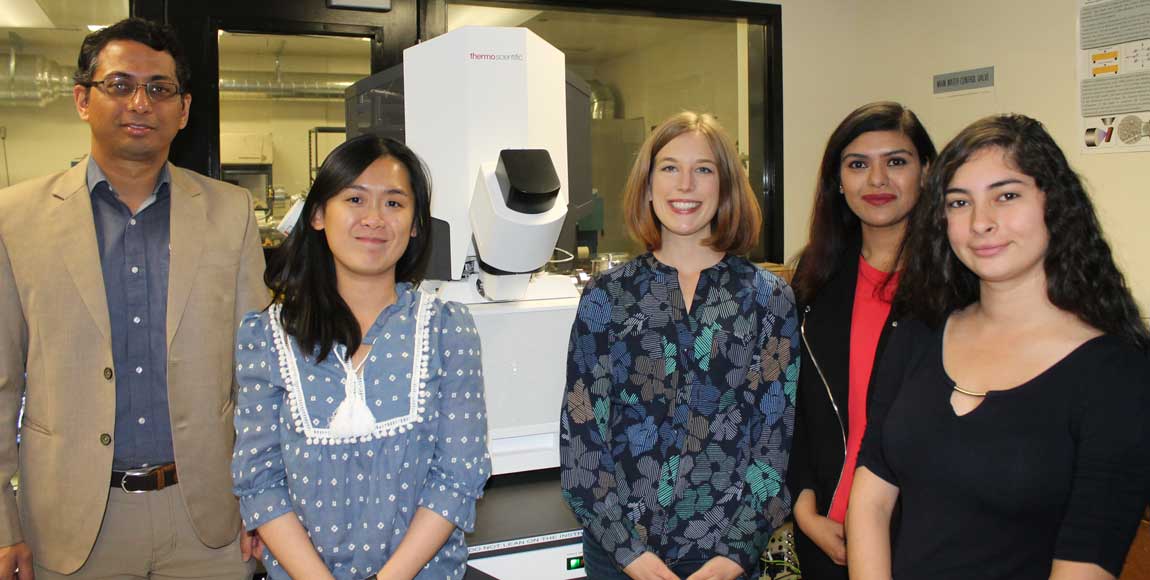Sid Pathak, assistant professor in the University of Nevada, Reno's Chemical and Materials Engineering department, is taking an evolutionary approach towards material design by studying the enamel of grazing animals to develop damage resistant materials for the Air Force.
The $805,000 grant, funded by the Air Force Office of Scientific Research, will be jointly researched by Pathak, Brandon Krick at Lehigh University and Gregory Erickson at Florida State University, and is entering the early stages of its findings.
"The enamel of grazing animals is an incredible biological material," said Pathak, who is the Principal Investigator for the grant. "We'll be working to understand the biomaterial composites that grazing animals have developed to preserve the reliability of their teeth, and using that information as a base for the development of our own damage tolerant materials."
The grazing animals in question are horses, elephants and hadrosaurs, or duck billed dinosaurs. These animals have highly specialized teeth that have file-like enamel crests and proclivity to be exposed to damage from abrasive sediments adhering to plant roots and fracturing pebbles.
"One of the first things we'll look at is the mechanical and damage tolerant properties of the enamel tissues across length scales, from the nano-scale to the whole-tooth level," Pathak said. "The enamel routinely experiences high contact stresses from tens of millions of feeding cycles. We are looking to understand how the enamel fabrics enable long term functionality, and reveal the key modifications that allow the enamel structure to be both wear-resistant while controlling crack propagation."
With funding running through 2021, Pathak hopes that the unique look at the evolutionary context of enamel and its biological makeup will ultimately lead to new designs for lightweight damage tolerant materials.
"The long-term vision is to create different standards for how the next generation thinks about designing aircraft and spacecraft and what it can be built with," Pathak said. "The team is extremely unique for this study. I'm a materials scientist and Brandon Krick is a tribologist and Gregory Erickson is a paleontologist with a biomechanical engineering background. These fields generally do not overlap, and we we're hoping that this combination will allow us to tackle this transformative integrative research."
Along with his involvement in the Air Force grant, Pathak is also the Principal Investigator on a National Science Foundation-funded grant researching multilayered nanocomposites made of alternate layers of metal and ceramics, and a NASA-funded project on soldering aboard the International Space Station.
The experiments for this project will utilize the newly acquired focused ion beam, or FIB, scanning electron microscope with integrated x-ray spectrometry. The instruments were funded by the 2017 NSF Major Research Instrumentation grant, the 2018 Department of Energy Scientific Infrastructure Support for Consolidated Innovative Nuclear Research, and the 2017 LANL Laboratory Education Equipment Gift program. These instruments are the first of their kind at the University as well as in the state of Nevada.
"We have so many opportunities for students to be a part of this research," Pathak said. "The research being done for the Air Force is just one area of study, and I'm hoping that these various grants can bring in students who are interested in the many different functions of engineering."











